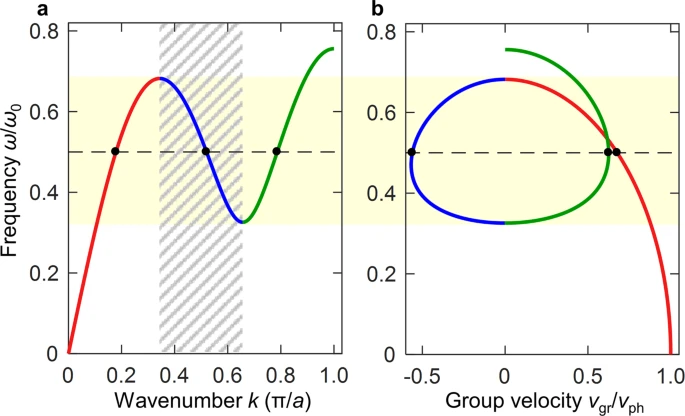Nanowerk June 10, 2021
Acoustic waves in gases, liquids, and solids usually travel at an almost constant speed of sound. However, rotons, quasiparticles, are an exception: their speed of sound changes significantly with the wavelength, and it is also possible that the waves travel backwards. Rotons were predicted in 1962 in the context of superfluidity. Until now, they could only be observed under special quantum-physical conditions at very low temperatures – and were therefore not suitable to technical applications. An international team of researchers (Germany, France) propose an artificial material that can produce rotons without any quantum effects under normal ambient conditions and at almost random frequencies or wavelengths. Thus, it might be possible in the future to better manipulate sound waves in air or in materials, for example, to bounce them back, redirect them, or create echoes. The artificial materials have not been demonstrated yet. They have made some of these metamaterials and currently working on the direct experimental proof for the existence of rotons…read more. Open Access TECHNICAL ARTICLE

Roton-like acoustical wave dispersion relation. Credit: Nature Communications volume 12, Article number: 3278 (2021)